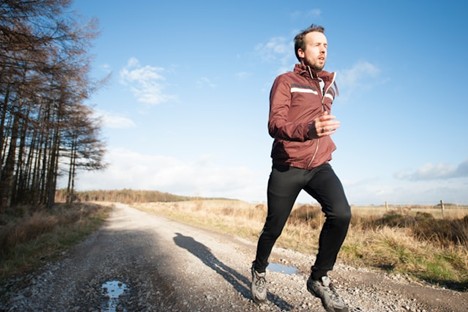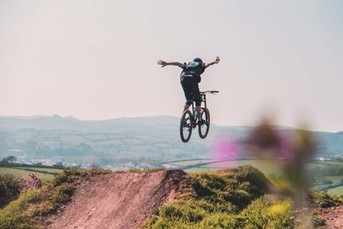
When the snow melts and the ski lifts stop spinning, many winter athletes are tempted to take a break. But for those truly committed to peak skiing performance, summer is anything but idle time. It’s a crucial season to focus on building strength, enhancing mobility, and boosting endurance, all key factors that lead to greater control, explosive power, and reduced risk of injury when the slopes call again.
Whether you're a weekend warrior or a competitive racer, staying active during the off-season can significantly elevate your game. Some ski shops even offer gear upgrades to support year-round training. Below is a comprehensive guide to off-season exercises that will help you return to the snow stronger, faster, and more prepared than ever.
Skiing demands explosive lower-body strength, rock-solid core stability, and exceptional joint mobility - especially in the hips, knees, and ankles. Without these elements, skiers are more prone to fatigue, poor technique, and injury. Off-season training does more than maintain fitness; it helps correct imbalances, increase joint range of motion, and build muscular endurance that winter alone can’t develop.
In Colorado and other ski-heavy regions, skiers who train year-round gain a distinct edge - not only in performance but also in injury resistance, particularly for the knees and lower back.
To train effectively, it’s important to address these five pillars:
Let’s break down exercises for each pillar and how they translate to winter performance.
Strong glutes, quads, and hamstrings are essential for skiing's dynamic movements, like carving, jumping, and absorbing moguls.
Why: Builds unilateral leg strength, stability, and control.
How to: Stand a few feet from a bench with one foot resting on it. Lower into a squat with your front leg. Keep your torso upright. Perform 3 sets of 8–10 reps per leg.
Why: Improves power and fast-twitch muscle response needed for turns and terrain changes.
How to: Jump from the ground onto a sturdy box, landing softly. Step down with control. Do 3 sets of 6 reps.
Why: Strengthens the posterior chain, essential for proper ski posture and speed control.
Tip: Focus on form over weight, keeping your spine neutral and core braced.
Flexibility allows deeper carving, better balance, and fewer injuries. Skiing puts a ton of pressure on the knees and hips, so loosen up.
Why: Improves internal and external hip rotation—crucial for smooth edge transitions.
How to: Sit on the ground with both knees bent at 90°. Rotate your torso over the front leg, hold for 30 seconds, then switch sides.
Why: Combines dynamic stretching for the hips, hamstrings, and thoracic spine.
Tip: Use it in your warm-up to prepare for strength sessions.
Why: Ski boots limit ankle mobility. Prepping the joint ensures better weight distribution and reduces strain on knees.
A strong core keeps your upper and lower body working in sync. It helps you stay balanced while navigating uneven terrain.
Why: Teaches spinal stability while moving limbs - mirroring skiing mechanics.
How to: Lie on your back, arms and legs raised. Slowly lower opposite limbs without arching your back.
Why: Targets obliques and lateral hip stabilizers, essential for carving and resisting rotational forces.
Why: Builds resistance to twisting forces that can knock you off balance or strain your lower back.
Skiing is dynamic - requiring constant shifting, edge control, and stabilization on one foot. Summer is the time to fine-tune those stabilizers.
Why: Challenges proprioception (your body’s sense of position) without visual input.
Why: Forces small stabilizing muscles to engage - mimicking conditions on uneven snow.
Why: Improves foot speed and coordination, helping you react quickly to changing conditions or terrain.
Winter sports tax your aerobic and anaerobic systems. Cross-training with cardio keeps your engine strong.
Why: High-altitude cardio improves VO2 max and mimics ski-specific movements like climbing and descending.
Why: Simulates the explosive bursts of skiing, alternating between sprint and recovery.
Why: Excellent for active recovery and low-impact conditioning.

Monday – Lower Body Strength
Tuesday – Mobility + Cardio
Wednesday – Power + Balance
Thursday – Recovery + Flexibility
Friday – Upper & Core Stability
Resistance Band Work
Saturday – Endurance & Agility
Sunday – Rest or Light Walk/Hike
Progress Slowly: Summer is about building a foundation. Don’t overtrain.
Focus on Form: Especially with mobility work. Quality over quantity.
Get Outside: Hiking, biking, kayaking - all support general fitness and help you stay mentally engaged.
Fuel Properly: Off-season gains require nutrition. Eat for recovery and energy.
Track Your Progress: Use a simple journal or app to monitor gains in flexibility, strength, and endurance.
Summer training is an essential investment in your winter performance. Skiing is a full-body sport, and the athletes who dominate the mountain are the ones who put in the work during the off-season. By combining strength, mobility, and endurance work tailored to ski-specific movements, you’ll not only reduce your risk of injury - but return to the snow stronger, faster, and more confident.
So, lace up your trail shoes, roll out the yoga mat, and power up your summer with purpose. The mountains will be calling again before you know it.